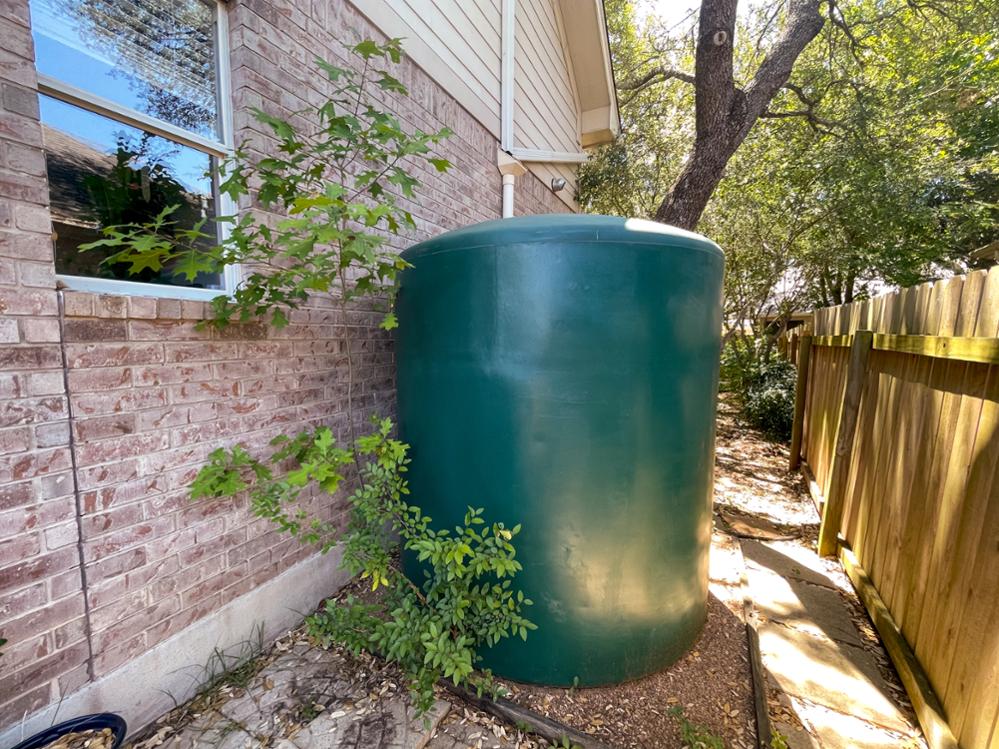Every drop counts: Commit to a water-wise home this spring Posted on March 13, 2024

It’s that time of year! The first day of spring is officially March 19, and you might be eager to help your plants and lawn bounce back to full splendor, do a little spring cleaning, and finally get the garage cleaned out. While yard work and home projects might be at the top of your mind, it’s also a good time to evaluate your home’s water system before a potentially hot and dry summer.
The National Weather Service’s Climate Prediction Center suggests there are increasing odds of a La Niña weather pattern developing this June, and that could mean a hotter and drier summer than average. So, how can you ensure you are conserving water heading into dry spells? By following some simple guidelines, you can commit to a water-wise home, conserving a precious resource and saving money at the same time.
Fix leaks
Identifying water leaks is critical for conserving water and reducing utility bills. If you find a leak, take action to repair it as quickly as possible. If your water provider offers online customer dashboards, you can monitor your water meter and usage to catch leaks early.
To check for leaks in your water system, start by turning off your faucets and water-using appliances, then locate your water meter, typically near the property line. Record the current reading and wait 15 to 20 minutes without using any water. Afterward, recheck the meter; any change in the reading could indicate a leak somewhere in your water system.
If you own an automatic irrigation system, be sure to check it regularly for leaks. Puddles or unusually damp areas can indicate a leak in the underground pipes or sprinkler heads. Repair or replace broken heads, valves, seals, and pipes as soon as possible. Additionally, you can conserve water by turning off your system altogether, installing a rain sensor to detect rainfall and interrupt the system’s typical schedule, or reducing the run time of your sprinklers if rain is sufficient for your weekly watering needs.
Install water-efficient appliances and fixtures
Water-efficient dishwashers, washing machines, toilets, showerheads, and faucets are readily available. Texas also encourages the purchase of water-efficient products with a sales tax holiday, which is May 25–27 this year. You can conserve water and save money by replacing your appliances and fixtures with water-efficient models.
A water-efficient showerhead is one of the most effective water-saving upgrades you can make to your home. Shorter showers can also significantly reduce your home's water usage. Sinks can be made more water-efficient by installing faucet aerators for a simple, cost-effective way to save water. The faucet’s efficiency can double without sacrificing performance. High-efficiency washing machines use less water and less energy. They also require less detergent and rinse more thoroughly, are less abrasive on clothes, and can fit larger capacity loads. Replacing an older dishwasher with a high-efficiency model can cut dishwasher water use in half.
Check your toilets for leaks by adding a few drops of food coloring or a dye tablet to the tank, but do not flush the toilet. If the coloring appears in the bowl within a few minutes, the toilet has a leak that needs to be repaired (usually the flapper or rubber washer).
Practice water-wise lawncare and gardening
Design a water-wise landscape. Plant water-efficient, well-adapted, and/or native shrubs, trees, and grasses in your landscape. Because native plants have adapted to a region’s climate over time, they conserve water more efficiently than non-native plants.
Use water-efficient landscape practices, such as proper mowing, mulching, and minimal fertilizer. Water your landscape in the early morning and at night. Winds are calmer and temperatures are lower in the early morning and late evening, resulting in less water loss due to evaporation.
To determine how much water your lawn needs, wet the soil to a depth of 4 to 6 inches to reach the plants' root systems. Use a soil probe or screwdriver to determine the depth the water reaches.
Contact your water provider for more information and stay tuned to local media on water restrictions in your area.
Harvest rainwater
One of the simplest ways to conserve water is to capture and store rainwater for future use. Not only is rainwater harvesting a great way to conserve existing water resources, but rainwater is ideal for watering your lawn and plants. While professionally manufactured storage containers are available, DIY solutions can be just as effective. Simple setups like buckets under home gutter downspouts or repurposing large plastic trash cans are cost-efficient alternatives.
To explore more resources and tips on water use and conservation, visit the Texas Water Development Board’s water conservation resource page at www.twdb.texas.gov/publications/brochures/conservation.
Check for leaky toilets: Test your toilets for leaks by adding a few drops of food coloring or a dye tablet to the tank, but do not flush the toilet. If the coloring appears in the bowl within a few minutes, the toilet has a leak that needs to be repaired (usually the flapper or rubber washer).
This article is posted in Weather / Drought / Conservation .